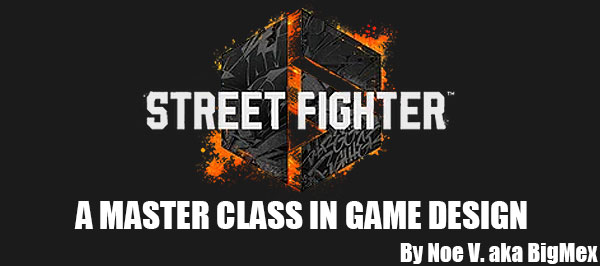
Street Fighter 6 Director Takayuki Nakayama, Producers Kazuhiro Tsuchiya, and Shuhei Matsumoto, and Designer Yusuke Hashimoto were doing some serious world building. They layered the entire game with hundreds of tiny details that made it feel as if the series had always been this deep. Take the part time bosses for example. Pizzaiolo, Brique, Mouse, Smalls, Ran, and Mando were named characters that served a purpose. In an adventure game like Zelda or post 2018’s God of War they would be the NPCs that you relied on. Vendors like Beedle, Kilton, Brok, and Sindri helped make your character stronger throughout the journey. After 35 years Street Fighter was now building up their own NPC lineup. Then there were the enemies. There were a handful of named opponents that helped push the plot along. I will talk about them more in the future. Right now I want to focus on the random gang members instead.
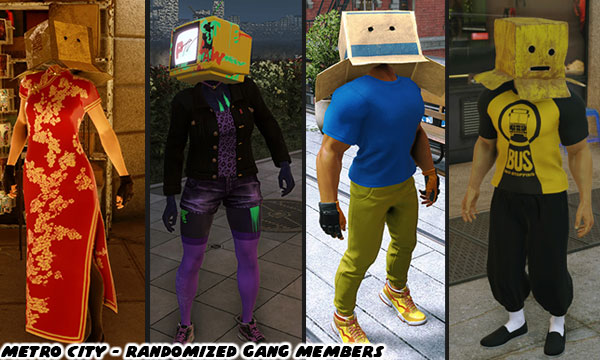
At first I thought that the game engine was actually creating random gang members. That somehow Capcom had gotten the character editor to spit out random pedestrians all over Metro City. All the engine did was place a box on the heads of them to turn them into thugs. It was only through repeated playing that I discovered that the team at Capcom, and the developers they worked with had created specific pedestrian, and gang types for the game. Each of the gang characters had their own theme, costuming, and features. These gangs might only hang out in a certain part of the city. Or they might only appear at night. The same applied to many pedestrians. In any case this demonstrated how far technology, and game design had progressed in over 30 years. In the original Final Fight there were roughly seven Mad Gear member types, with changes to the sprite cosmetics, and colors to make them appear as if there were 16 types, not including the bosses. You would fight this lineup again, and again all over the city. I was, and will always be a fan of the Mad Gear Gang. I loved their look, their designs, fighting style, leadership, and canon that they created for the SF universe.
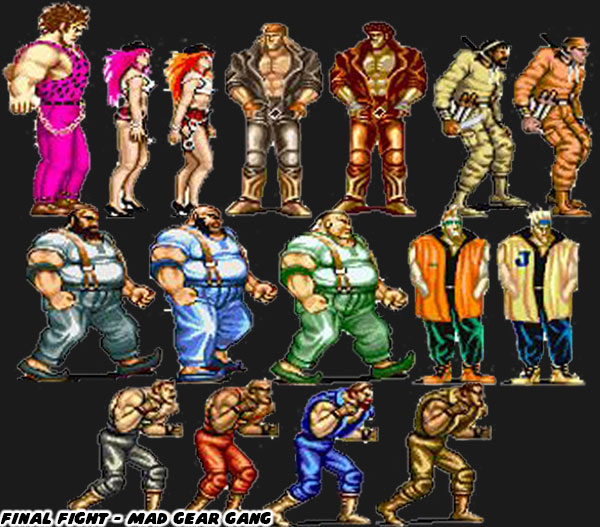
Looking back at the ‘80s I understood that the technical limitations of the CPS1 hardware was the reason why Capcom had to use the same sprites over, and over. I also understood that when Final Fight, and its sequels came to home consoles they would never be as great as the arcade original. Even then I was happy with the cast because they were so memorable. In Street Fighter 6 the characters that wore the costumes, and looked like classic Mad Gear members had actual names. The Andore family did turn up, as did Roxy in the story mode, however the majority that looked like classic Mad Gear were newly named characters. This was an important detail to consider, I think it was done as a nod to the legacy of the series because every other gang in the game had generic names. Not only that but these smaller gangs often hid their identity with a box, mask, or helmet. There were at least 80 unique gang members that I would categorize into 20 different groups.
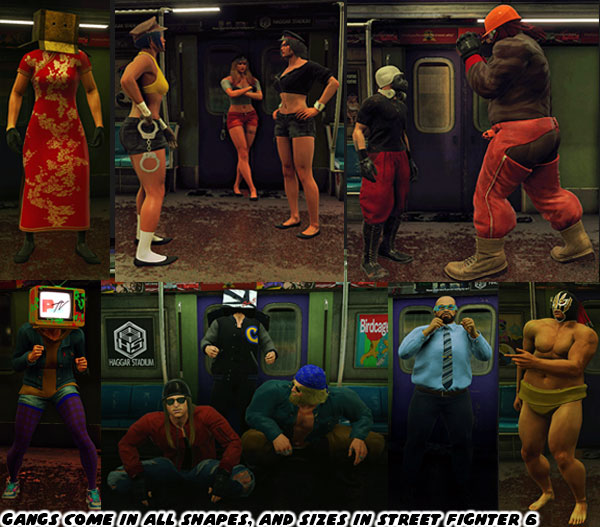
The largest new gang that was rivaling Mad Gear were known as the Crows, then there were many smaller gangs in a turf war over Metro City. This was spelled out several times in the game. Some of the gangs were themed after construction workers, some after motorcycle gangs, then there were businessmen, sumo wrestlers, gamblers, health nuts, monks, and breakdancers. They had clever names like Chickadee, Little Crow, Reaper, Sketchy, Slick Chopper, Vice Worker, and Dump Truck. When wandering the streets of Metro City players could identify potential trouble ahead of time. Regular pedestrians did not wear a mask, or box on their head. Sometimes you could get around them, but more often than not if they spotted you then they would come running after, and throw the first punch. At first I didn’t really get the whole box head concept. I figured it was a way to make these opponents feel more random than the dozen Mad Gear members we were used to from Final Fight. Then I came across a resident that explained the origin of the box. What started off as package thieves turned into a way to hide an identity from face scanners, and closed circuit televisions.
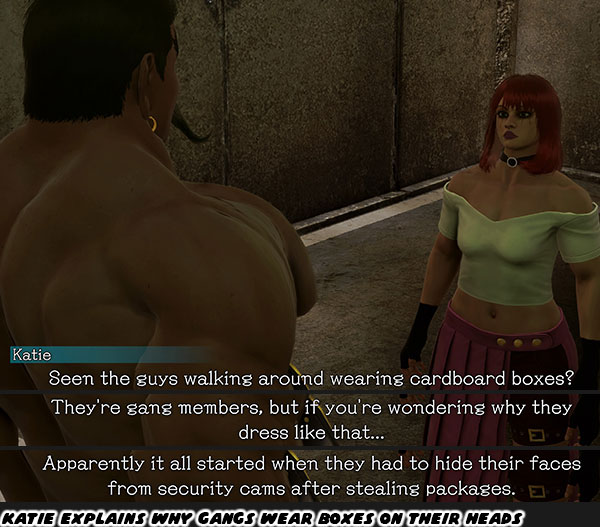
Every gang featured diverse body types. There were mixes of male, and female opponents. Some were tall, some short, some fat, some skinny, but most muscular. There were nimble characters that would leap around the screen. There were characters that mostly threw items, some that fought mainly with drop kicks, or would try to tackle you. There were also very large enemy types that were difficult to drop. In the original Final Fight these were the Andore-class of brawler. The construction gang had a bruiser named Big Carl, and the Mad Gear now had the Glob. Every one of these enemy types sort of reflected the diversity of the SF cast. A character like Cammy, or Kimberly was blindingly fast. E. Honda, and Guile were strong, but also tough. If players paid attention to the gangs they would spot patterns. Such as Scamper threw wrenches, El Toro liked to perform drop kicks, the Rough Rider would armor up before attacking, and Yuen would jump all over the screen. Some gang members could perform a move or two of the SF masters. You could identify them by their stance, and animation. They actually moved like the SF characters. They might skip along like Kimberly, balance on one foot like Dhalsim, or square up with a high guard like Guile. Part of mastering a fighting game was recognizing the moves of certain characters. The hundreds, if not thousands of battles in SF6 would guarantee that audiences would identify certain fighting styles on a subconscious level simply by seeing the stance of the opponent.
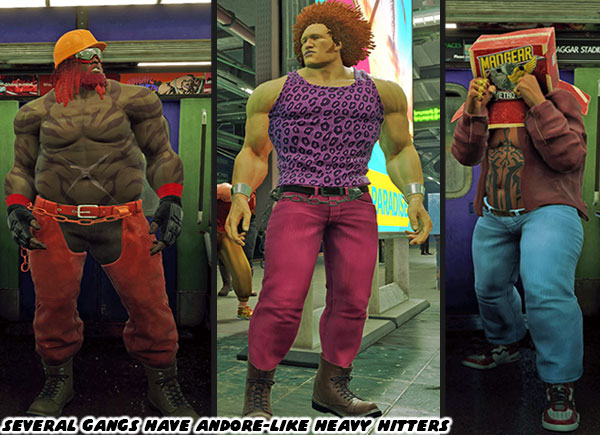
There were also roving gangs of machines that threatened the citizens of Metro City. There were military drones, delivery drones, and medical drones buzzing around. There were also large Roomba-type robots that were street sweepers, and automated patrols to watch out for. The company that built them was SiRN. They were incorporated into the plot of the World Tour. They had lost control of their robots, so they encouraged you to disable them if you came across any. Fighting a drone was completely different than fighting a gang member. Players had to do jumping strikes in order to reach the drones, and crouching attacks to hit the Hyoombas. Again these encounters served a purpose. Gamers had to remember that when fighting an opponent, any opponent, it was best to use your range as an advantage. Players that only fought or defended while standing up would be easy to sweep, or get crossed up by a leaping opponent. The best fighters knew that they needed to strike high, and low, rather than only look for openings straight ahead. These machine enemies were essential in reinforcing those lessons.
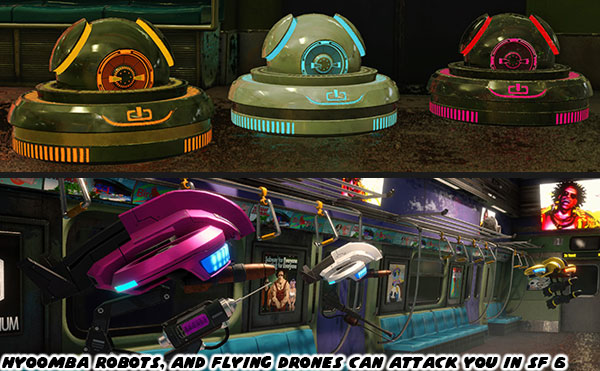
Some of the most difficult automated opponents were refrigerators. They were a big surprise when you first encountered them. They were incredibly durable, and could only be damaged when their doors were open. The downside was that they threw their contents at the player. They would hurl groceries, and can keep players from reaching their doors. The Vagrant Refrigerator was the “Ryu” of the appliances. It was the peak of the mountain, and could easily flatten players by shooting frozen whole tuna fish at them. Then there were the self-propelled Servers that acted like the “Zangief” of appliances. Let’s just say you wouldn’t want to get caught in their vortex.
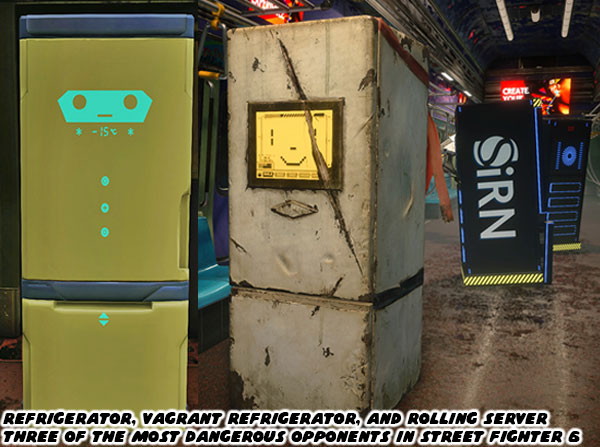
As absurd as the human, and machine gang types might seem, they were crucial for getting the players to improve at the genre. Think about how diversity affected the enemy types in other video games. Look at Zelda, God of War, or any other adventure title. These games had similar enemy types that wore different skins, or textures. You could identify the opponent, and know the best weapons, and attacks to use against them. Battling the same characters all over the map made you a better player. It also gave you skills that you could transfer to other adventure games. The box heads, and runaway robots in SF6 were not unlike the Moblins, or Dark Elves in fantasy games. Audiences that got proficient at SF6 were now equipped to pick up other fighting games. The team at Capcom did not just create a sequel, but rather they rewrote the very definition of the genre. Street Fighter 6 had as much put into its development as the biggest AAA adventure titles.
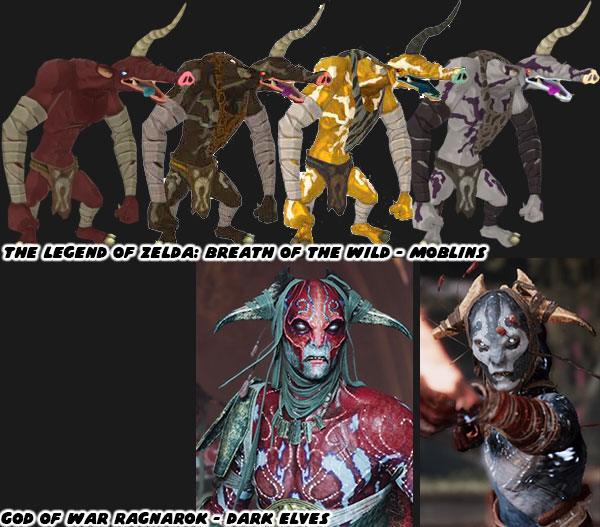
The World Tour mode would not have worked without an immersive story, a fully realized world, and character development. But which Street Fighter would we be following? Would it be Ken, and Ryu, the ones that had carried the series for over 35 years? Would it be Luke, a character introduced in Street Fighter V in 2021? Who would Capcom hang the fate of the franchise on? The answer again showed how far the studio was willing to push the genre. In the next blog we will look at how the player became the most important character in the universe. If you are a long time fan of Street Fighter then I would like to hear your impressions of SF6. If you have never played any game previously then tell me your experiences in the comments section please. As always if you would like to sponsor me
please visit my Patreon page and consider donating each month, even as little as $1 would help make better blogs and even podcasts!


















No comments:
Post a Comment